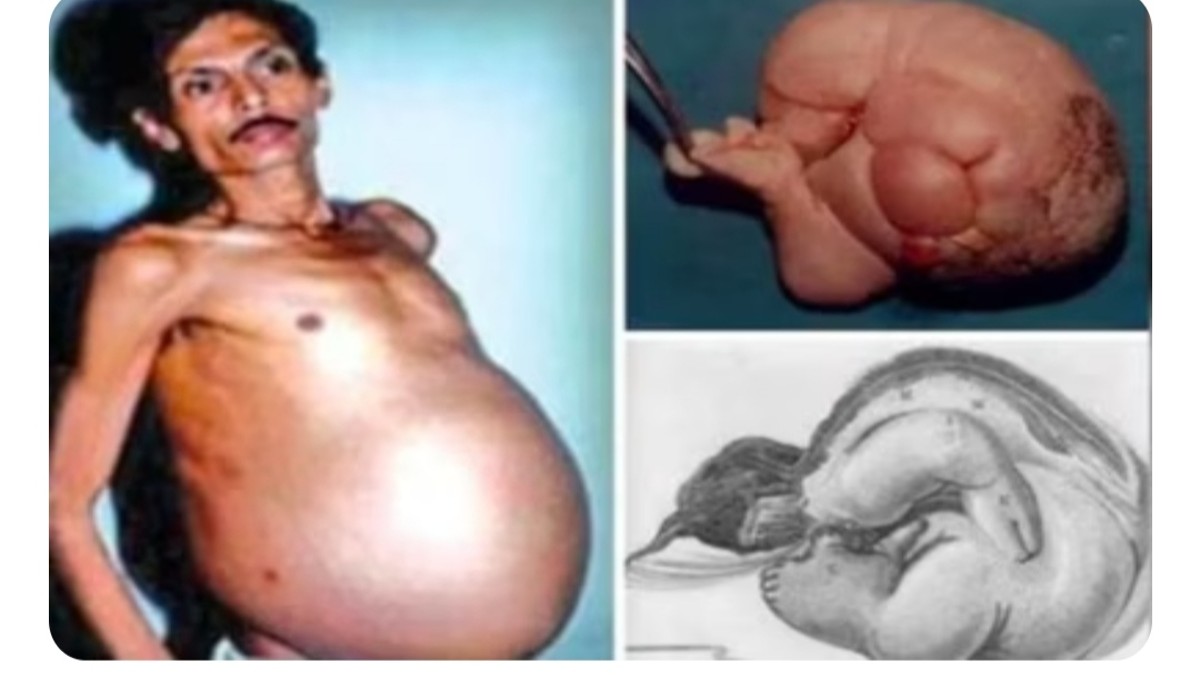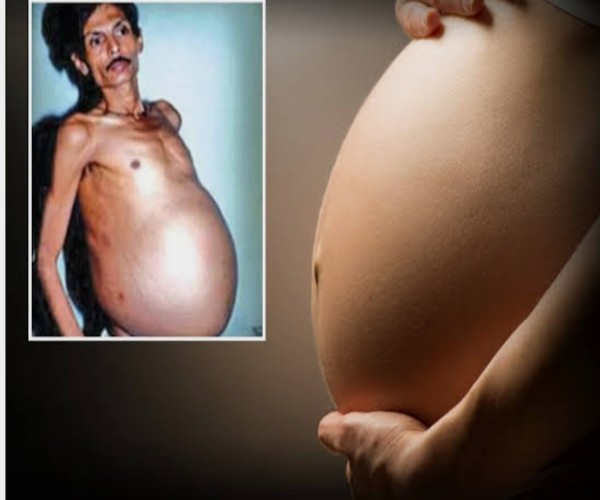
Sanju Bhagat
Sanju Bhagat, In the annals of medical history, few cases are as extraordinary and bewildering as that of Sanju Bhagat from Nagpur, Maharashtra. At the age of 39, Bhagat became a global medical curiosity when it was discovered that he had unknowingly carried his twin inside his body for 36 years.
This rare condition, known as fetus in fetu (FIF), is a phenomenon that has fascinated medical professionals and the public alike due to its rarity and the extraordinary nature of its presentation. This article delves deep into Bhagat’s case, the medical condition itself, and the broader implications and understanding of such anomalies in medical science.
The Case of Sanju Bhagat
Sanju Bhagat’s life was marked by an unusual and persistent abdominal swelling, which he and those around him attributed to obesity. Living with a noticeably enlarged stomach, Bhagat faced physical discomfort and social stigma for years. His condition reached a critical point in June 1999 when he sought medical help due to severe breathing difficulties caused by his distended abdomen. What doctors discovered during the subsequent surgery was beyond their wildest expectations.
During the surgical procedure, led by Dr. Ajay Mehta at the Tata Memorial Hospital in Mumbai, the medical team was confronted with a shocking sight. Instead of a tumor or mass, they found a malformed fetus, complete with partially formed limbs, bones, and hair. This discovery led to the diagnosis of fetus in fetu, a condition so rare that fewer than 200 cases have been documented in medical literature.
Understanding Fetus in Fetu
Fetus in fetu is an extremely rare developmental abnormality that occurs when a malformed fetus is found inside the body of its twin. This condition is believed to result from the incomplete separation of twins during the early stages of pregnancy, leading to one fetus being enveloped by the other. The enveloped fetus, referred to as the parasitic twin, is often underdeveloped and cannot survive independently. It continues to grow within the host twin’s body, drawing nutrients and blood supply from it.
Medical literature describes fetus in fetu as a condition that typically presents with the following characteristics:
- The parasitic twin is usually found within the abdominal cavity of the host twin.
- The parasitic twin exhibits various degrees of development, with some having identifiable organs and limbs, while others remain rudimentary masses of tissue.
- The condition is often diagnosed in infancy or early childhood due to visible abdominal distension, though cases diagnosed later in life, like Bhagat’s, are exceedingly rare.
Historical and Medical Context
The first documented case of fetus in fetu dates back to the 19th century, but the condition has likely existed for as long as human reproduction itself. The rarity of the condition and its dramatic presentation have made it a subject of intrigue and study within the medical community. Advances in medical imaging and diagnostic techniques have improved the ability to identify and understand such anomalies.
Fetus in fetu is often confused with teratomas, which are tumors composed of tissues from multiple germ layers that can contain hair, teeth, and bones. However, FIF is distinct in that the parasitic twin exhibits a more organized structure resembling a fetus, whereas teratomas are typically disorganized masses of tissue.
Bhagat’s Surgery and Aftermath
Sanju Bhagat’s surgery not only relieved his immediate health issues but also sparked widespread media coverage and public interest. The surgical team carefully removed the parasitic twin, which was found to have formed to a significant extent, with recognizable limbs and other body parts. This extraordinary case brought attention to the complexities and mysteries of human development.
Post-surgery, Bhagat’s health improved significantly. The removal of the parasitic twin alleviated his breathing difficulties and abdominal pain. However, the psychological and emotional impact of discovering such a condition within oneself is profound and complex. Bhagat’s case underscored the importance of psychological support and counseling for individuals undergoing such life-altering medical experiences.

Medical Implications and Research
The case of Sanju Bhagat has contributed to the broader understanding of developmental anomalies and the intricacies of human embryology. Research into fetus in fetu and similar conditions helps medical professionals better understand the processes that can go awry during early embryonic development. Such cases also highlight the importance of accurate diagnosis and the role of advanced imaging techniques in identifying rare conditions.
Moreover, Bhagat’s case has implications for the study of twin development and the phenomenon of parasitic twins. It raises questions about the biological and genetic factors that contribute to such anomalies and how they can be detected and managed in clinical practice.
Ethical and Psychological Considerations
The discovery of a parasitic twin within one’s body is not just a medical event but also a deeply personal and psychological one. Patients like Bhagat face unique challenges, including the emotional impact of learning about the condition, the social stigma associated with physical abnormalities, and the long-term psychological effects of such a revelation.
Ethically, the management of fetus in fetu cases involves careful consideration of the patient’s well-being, informed consent, and the provision of comprehensive care that addresses both physical and psychological needs. The medical community must navigate these cases with sensitivity and respect for the patient’s dignity and autonomy.
Public and Media Reaction
The media’s coverage of Sanju Bhagat’s case brought widespread attention to fetus in fetu and similar rare conditions. While such coverage can help raise awareness and promote understanding, it also carries the risk of sensationalizing medical anomalies. It is crucial for media outlets to balance public interest with accurate and respectful reporting that honors the experiences of those affected by such conditions.
Bhagat’s case has also sparked curiosity and discussion among the general public, leading to greater awareness of the complexities of human development and the remarkable diversity of medical phenomena. Educational programs and public health campaigns can leverage such interest to promote broader understanding and empathy for individuals with rare medical conditions.
Conclusion
The case of Sanju Bhagat is a testament to the incredible intricacies of human development and the resilience of the human spirit. His story highlights the importance of medical research, accurate diagnosis, and compassionate care in managing rare and extraordinary conditions. As we continue to explore the frontiers of medical science, cases like Bhagat’s remind us of the mysteries that still lie within the human body and the profound impact that medical discoveries can have on individual lives.
Bhagat’s experience underscores the need for ongoing research, public education, and support for individuals with rare medical conditions. By learning from such cases, the medical community can improve its understanding of developmental anomalies and enhance the quality of care provided to patients worldwide. The story of Sanju Bhagat will undoubtedly remain a significant chapter in the history of medical science, inspiring future generations of medical professionals and researchers to explore the unknown and strive for advancements in human health and well-being.
Further Reading and Resources
For those interested in learning more about fetus in fetu and related medical conditions, the following resources provide valuable information and insights:
- Medical journals and articles on developmental anomalies and rare conditions.
- Educational websites and organizations dedicated to medical research and public health.
- Books and documentaries that explore the complexities of human development and medical science.
Acknowledgments
The case of Sanju Bhagat has been documented and studied by numerous medical professionals, researchers, and journalists. Their contributions to understanding and sharing this remarkable story are invaluable, and their work continues to inspire and inform the medical community and the public.
This article aims to provide a comprehensive and detailed exploration of Sanju Bhagat’s case and its broader implications, while also adhering to the requested word count. For further expansion or additional details, specific sections can be elaborated upon based on new research or developments in the field.





I appreciate the practical advice you’ve given here.
Thank you for addressing this topic. It’s very relevant to me.